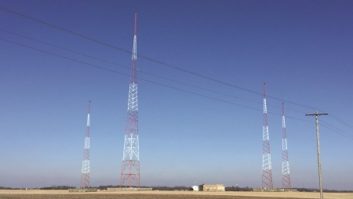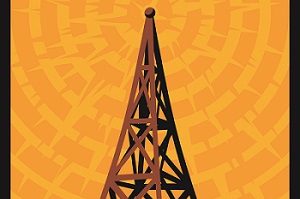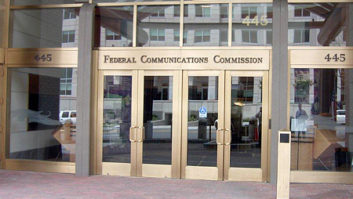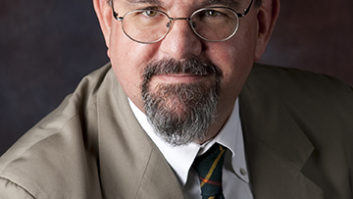Perhaps no proceeding issued by the Federal Communications Commission this year has garnered as much interest as the AM Revitalization document released in late October.
Although there seems to be substantial interest in the translator portion of the order, several other items of interest were changed, or are expected to be changed. This month we look at some of the high points of MB Docket 13-249.
First, the long awaited translator filing window for AM stations is now on the horizon and is no longer speculation. However, instead of a single window, the commission will open a series of four windows. The first two windows would allow additional flexibility in the relocation of authorized translators, while the second two windows would be for new authorizations.
WNNZ(AM) tower The first two windows in 2016 will essentially waive the minor change definition and allow the relocation of an authorized translator up to 250 miles. The authorization to be relocated must be on a commercial channel, and any rule-compliant commercial channel may be specified at the final location. The first of these windows, which will run for six months, will be for Class C and D AM stations only. A second three-month period afterwards will allow for all classes, including Class C and D facilities that did not file in the first window. In order to accommodate as many stations as possible, one and only one application per AM station may be submitted during these windows.

The second windows, slated for 2017, will permit the submission of applications for new translators. As with the 2016 windows, Class C and D facilities will initially be able to file, with all classes filing later. If a station has participated in the 2016 windows, it will not be afforded an opportunity to double-dip and file in 2017.
THINGS TO CONSIDER
With these windows in mind, one of the questions a broadcaster contemplating a translator should consider is the availability of channels in your market. If you are located in a rural area where there are more available FM channels than AM stations in the vicinity, it may make sense to roll the dice and wait for the latter windows rather than pay for an extant authorization. However, if you find yourself in a spectrally congested area, having a deal worked out for an existing translator may be the smart way to go. Contact your consulting engineer to examine the possibilities, and risk.
To aid in the relocation of stations, the commission also relaxed the community of coverage requirements in the order. For daytime operations, existing stations are now required to cover either 50 percent of the land or population with the predicted or measured 5 mV/m contour. New stations, or those proposing a change in license, are still required to meet the 80 percent threshold. The rationale here is that existing stations have a more difficult time in relocating, whereas new stations or those making community changes will likely have greater flexibility in site acquisition.
On the nighttime side, similar changes have been made. The nighttime coverage requirement for existing facilities has been dropped. New stations, and those proposing a change in the community of license, have a 50 percent threshold to meet. The 50 percent threshold, which can be met by either area or population, requires service by the greater of 5 mV/m or the calculated nighttime interference-free field strength.
While on the subject of nighttime, the �Ratchet Rule� has also finally been repealed. The original concept behind this rule was that Class A or B stations modifying their nighttime facilities had to reduce their skywave contribution to certain stations. The thought being this would eventually reduce the level of interference on the band at night. In reality, it was waived most of the time, and caused extra burdens on those that had to relocate for some reason. While some comments supported its retention, the commission noted that these comments continue the �disproven rationale� that created the rule in the first place.
OTHER CHANGES
The other two items actually implemented in this order are wider implementation of modulation dependent carrier level control technologies, and a modification to AM antenna efficiency standards. Under the latter, the commission is reducing the existing antenna efficiency standards by 25 percent. Although some proposals were made to eliminate them, the commission decided against this due to potential interference considerations. That being said, the staff is directed to entertain waivers for antennas not meeting the standards as long as interference is not increased.
The second and third portions of the release deal with a further notice of proposed rulemaking, and a notice of inquiry. Topics in the former include modifications to the AM protection standards, changes to the AM translator site requirements, modifications of the partial proof and moment method proof rules, and the surrender of the licenses of those running expanded band and standard band simultaneously. Under the NOI portion, the commission discusses utilization of AM expanded band and a relaxation of the main studio requirements. Of these topics, it seems that the proposed changes to the protection standards and the translator site rules are the most crucial at this time.
For example, under the proposed changes, Class A stations would be protected day and night to the 0.1 mV/m contour groundwave contour from co-channel stations, and to the 0.5 mV/m groundwave contour day and night on first adjacent channels. Additionally the critical-hours protections for Class A facilities would be eliminated altogether. This continues the incremental reduction in the dominance of the �clears.� For other classes of stations, it is proposed that the nighttime interference calculation methods be rolled back to pre-1991 methods. In 1991 the method of nighttime interference calculations was changed to include adjacent channel signals with a tiered approach. The thought was this would decrease interference on the band, but in reality what it did was preclude changes to facilities, and in the end never really did reduce interference as was originally envisioned. The return to the pre-1991 methods means that only co-channel signals are to be considered.
On the daytime side of things, for Class B, C and D stations we see substantial changes. Currently the protected daytime contour for these classes of stations is the 0.5 mV/m in co-channel and first-adjacent channel situations. If the rules are implemented as proposed, this value would increase to 2 mV/m. For co-channel considerations the current 26 dB protection ratio would remain, however, the interfering contour would increase to 0.1 mV/m from 0.025 mV/m. In first-adjacent situations, the 1991 change to a 6 dB ratio would be rolled back to a 0 dB ratio. Prior to the 1991 order, the interfering and protected contours were equal at 0.5 mV/m. After 1991 the interfering contour was dropped to 0.25 mV/m, while maintaining the protected value at 0.5 mV/m. This created substantial areas of grandfathered contour overlap. It is proposed now that the values should be changed such that prohibited overlap will occur with overlap of the 2.0 mV/m contours. And finally, the third adjacent protections are eliminated entirely, and the second adjacent protections change to a 0 dB ratio at 25 mV/m.
The proposed site change rules would allow the translator contour to be contained within the greater of either the 2 mV/m daytime contour or a 25-mile radius, but in no event extend beyond 40 miles from the AM site. This is a contrast from the current situation where the translator contour must be within both the 2 mV/m daytime contour and a 25-mile radius.
All AM licensees should be looking now at what these changes will potentially do to their coverage and interference. If your neighbors upgrade their facilities to take advantage of these changes, and you remain status quo, the result could be an effective loss of coverage by your facility.
In the end, the commission has implemented some welcome changes, and made some interesting proposals in this most recent order. They still, however, have not taken the bold step of proposing a transition to all-digital. Perhaps that will happen someday, and the current movements are a first step towards priming that pump.
Ruck is the principal engineer of Jeremy Ruck and Associates, Canton, Ill.










